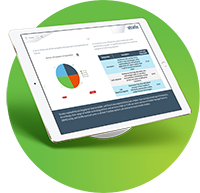In my eighteen years of working in healthcare IT, I think two events have had the biggest impact on how patients, providers, and healthcare systems utilize and adopt new technology. The first was the government response to the economic downturn in 2008, and the second is the COVID-19 pandemic. These events were disruptors, speeding up the use of technology to improve patient care and outcomes. The change prompted by both events will keep accelerating. In the future, more healthcare will take place in the home thanks to mobile devices, telehealth, and remote monitoring. The chronically ill, seniors, and those needing palliative or hospice care will benefit the most.
The Great Recession and the Resulting HITECH Act
The 2008 financial downturn and the implementation of the American Recovery and Reinvestment Act of 2009 changed the healthcare system forever. The recovery legislation included the Health Information Technology for Economic and Clinical Health Act, known as the HITECH Act, promoting the adoption and expansion of health information technology. The priority was to create a national network of electronic health records (EHR) to improve healthcare quality and efficiency. It promised Medicaid and Medicare incentive payments for the adoption and meaningful use of EHR systems. HITECH would transform healthcare systems and how they operate.
The COVID-19 Pandemic
The impact of the pandemic went far beyond frontline workers and facilities struggling to combat the virus. Other healthcare like outpatient procedures, chiropractors, therapy sessions, and dentist visits suddenly got put on hold. The use of technology like telehealth jumped dramatically. A CDC report found a 154% increase in the first month.
Other technology use that began before the pandemic has picked up momentum as well. Healthcare systems that primarily relied on email, text, IMs, and other technologies to engage with the patient understand that’s no longer adequate. Connected mobile devices are bridging the gap. The pivot happened very quickly and now is second nature for health systems, home health, and hospice workers. OEMs like Apple and Samsung have become key allies in the new care model strategies across the continuum.
While the HITECH act accelerated EHR use, the pandemic response improved capabilities for sharing patient information between health systems through interoperability exchanges. New ways to operationalize and execute on that information have impacted care delivery, outcomes, and response times.
Technology allows patients to educate themselves and take more proactive roles as they move through care management issues. Filling out medical history information used to be a 30-minute process. The information wasn’t always accurate—especially when a patient was in the middle of a medical crisis and in a state of high anxiety. New technology takes care of information transfers so the patient can focus on the present issue, and the health can provide a better experience. With EHR, new information can be universally added or updated instantly, allowing the care team to provide an accurate, coordinated plan.
Electronic health records also allow for better long-term record keeping. When switching providers, there is a myriad of paperwork and transitioning records, but technology improves that process leading to better patient tracking and better outcomes.
Home Healthcare Post-Pandemic
As Meg Barron, the American Medical Association’s vice president of digital innovation, said last year, post-pandemic, “All signs point to more health at home,” so healthcare organizations must figure out ways to optimize in-person and virtual care.
While the use of telehealth is expected to fall a bit once the pandemic fully passes, the consensus is it will remain much higher than pre-pandemic levels. That means thinking about the technology the providers use and what patients have at home to interact with providers.
The use of remote patient monitoring programs (RPM) to treat patients with chronic diseases is expected to grow. Issues like blood pressure, blood sugar, oxygen levels, and heart function can all be tracked continuously with wearable devices that alert a caregiver when there’s a problem.
Home healthcare providers will increase their reliance on mobile technology for a host of reasons. It gives quick access in the field to electronic health records, scheduling, and other information like care plans while allowing the caregiver to collaborate quickly and easily with the rest of the team.
Great mobile technology experiences also make a caregiver’s job easier, which is important in a field known for its high burnout and turnover rates.
The right mobile solutions improve productivity, reduce costs, streamline workflows, increase employee engagement, and enhance patient care.
Make Digital Transformation Your Number One Priority
The future of home healthcare is now intrinsically linked with mobile technology. Home health organizations can no longer afford to slow-roll digital transformation to a truly connected and mobile patient care model. They need solutions that can be implemented quickly, securely, and at scale to grow and thrive in a rapidly evolving industry. Robust support should be part of the plan as it’s key to dependability, adoption, and user experience. Getting it right means better business and patient outcomes.

2021 Enterprise Mobility Outlook
Stratix and VDC Research surveyed hundreds of IT decision-makers to see how they adapted and thrived amidst disruption through mobile first strategies.
Get the Report



